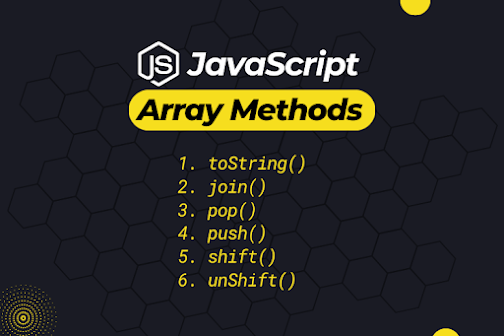Introduction
Arrays are an essential data structure in Javascript, allowing you to store multiple values in a single variable. They come with a wealth of built-in methods that facilitate manipulation, iteration, and transformation of array elements. In this blog, we'll dive into five fundamental array methods in Javascript, namely toString(), join(), pop(), push(), shift(), and unshift(). We'll explore each method in detail, accompanied by examples to illustrate their usage.
1. toString()
The toString() method converts all the elements of an array into a single string and returns that string. Each array element is separated by a comma in the resulting string.
Syntax:
array.toString()
Example:
2. join()
Similar to toString(), join() also creates a string from all the elements of an array. However, it allows you to specify a custom separator to be used between the elements.
Syntax:
array.join(separator)
Example:
3. pop()
The pop() method removes the last element from an array and returns that element. This operation also reduces the length of the array by one.
Syntax:
Example:
4. push()
The push() method adds one or more elements to the end of an array and returns the new length of the array.
Syntax:
array.push(item1, item2, ..., itemN)
Example:
5. shift()
The shift() method removes the first element from an array and returns that element. This operation also adjusts the indices of the remaining elements.
Syntax:
array.shift()
Example:
6. unshift()
The unshift() method adds one or more elements to the beginning of an array and returns the new length of the array.
Syntax:
array.unshift(item1, item2, ..., itemN)
Example:
Conclusion
These five array methods are fundamental to working with arrays in Javascript. By leveraging these methods, you can efficiently manipulate, concatenate, and modify arrays to suit your specific needs.
Remember that these examples are just a glimpse of what you can achieve with array methods in Javascript. There are many other methods available, such as slice(), splice(), concat(), indexOf(), map(), filter(), and more, which open up a world of possibilities for data manipulation in your applications.
Keep exploring and experimenting with array methods, as they are powerful tools that will undoubtedly enhance your coding experience in Javascript.









%20Hook.png)
0 Comments